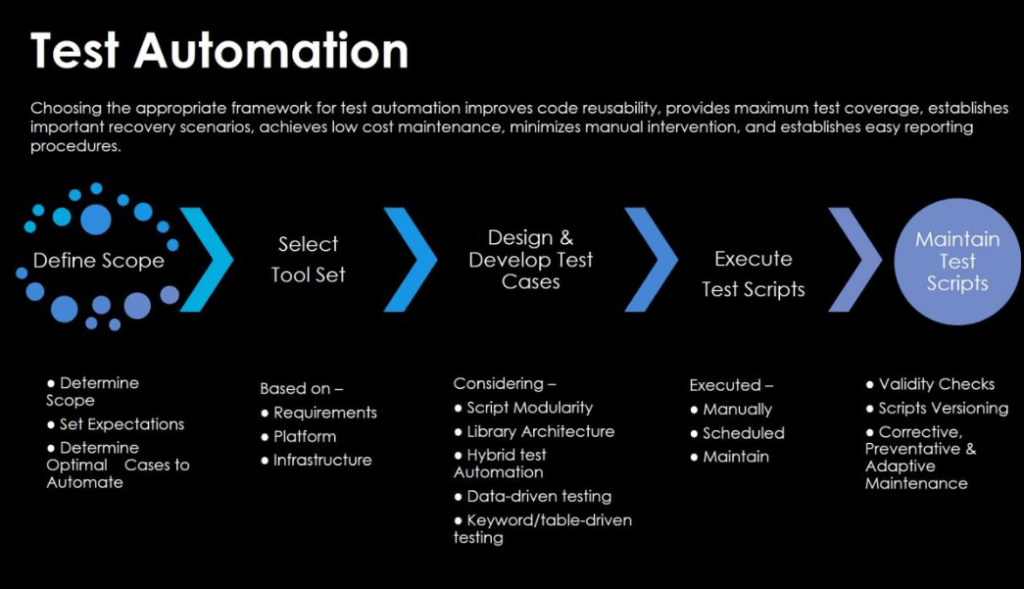QA Automation VS Manual Testing
As software development becomes increasingly complex, QA automation has become an essential part of ensuring product quality. However, manual testing still plays a critical role in the software development process, and balancing the use of automation with manual testing can be a challenge. Software testing is an essential aspect of software development. It ensures that the software is functioning as intended and meets the end-users’ requirements.
In this blog post, I will explore how to strike the right balance between QA automation and manual testing to ensure that your product is of the highest quality and also the pros and cons of both methods and help you decide which approach is best for your project.
Manual Testing:
Manual testing is a traditional approach where a tester manually executes test cases to identify bugs and issues. It involves testing the software from an end-user perspective, ensuring that all features work as expected. Manual testing is typically done by experienced testers who have a deep understanding of the product and can provide valuable feedback to developers.

Advantages of Manual Testing:
- Human Perspective: Since manual testing is done from a human perspective, it can catch issues that automated testing may not detect.
- Exploratory Testing: Manual testing allows testers to explore the software’s functionality and identify defects that were not in the original test cases.
- Cost-Effective: Manual testing is less expensive than automated testing since it does not require any additional tools or software.
- Flexibility: Manual testing allows testers to adapt to changes in the requirements quick.
Disadvantages of Manual Testing:
- Time-Consuming: Manual testing is a time-consuming process since every test case has to be executed manually.
- Repetitive: Manual testing can become repetitive and tedious for testers, leading to a decrease in productivity.
- Human Error: Manual testing is prone to human error, leading to missed defects or false positives.
QA Automation:
QA Automation involves using software tools to execute test cases automatically. It involves writing scripts that mimic user interactions to identify bugs and issues. Automated testing is typically done by developers, QA engineers, or automation engineers who have experience with coding and testing tools.

Advantages of QA Automation:
- Faster Testing: Automated testing is faster than manual testing since the tests can be executed automatically.
- Reusability: Automated tests can be reused multiple times, saving time and effort.
- Accuracy: Automated testing is less prone to human error, ensuring that all defects are identified.
- Scalability: Automated testing is highly scalable since it can be run on multiple devices and platforms simultaneously
Disadvantages of QA Automation:
- Cost: Automated testing can be expensive since it requires additional software and tools.
- Limited Scope: Automated testing is best suited for repetitive tasks and cannot replace manual testing for exploratory or usability testing.
- Maintenance: Automated tests require regular maintenance to ensure that they continue to work correctly.
As software development teams strive to release high-quality products at a rapid pace, the debate between the benefits of manual testing versus automation testing continues. Manual testing, where human testers perform tests to validate software behavior, is often viewed as time-consuming and error-prone. Automation testing, which uses tools to run tests, offers faster and more efficient execution. However, the right balance of both is key to ensuring quality and reducing the risk of software defects.
Why is the balance important?
It is important to strike the right balance between QA automation and manual testing because both methods offer unique advantages that can improve the quality of your software.
Manual testing offers a human perspective that is difficult to replicate with automation. Experienced testers can identify edge cases and simulate complex scenarios that are challenging to automate. They can also provide quick feedback on new features, allowing developers to make adjustments quickly.
On the other hand, automation testing is highly efficient for repetitive tasks, which saves time and reduces the risk of human error. Automated tests can be run at any time, which ensures that the software is always being validated. Additionally, automation testing can be used to perform tests that are difficult or impossible to replicate manually, such as load and performance testing.
Therefore, balancing both types of testing can optimize the benefits of both methods and improve the overall quality of the software product.
How to find the right balance?
Define the scope of automation: Determine which tests are best suited for automation and which ones require manual testing. For instance, tests that need to be executed frequently and involve repetitive tasks are ideal candidates for automation. Whereas, tests that require a human perspective, such as exploratory testing or usability testing, are better suited for manual testing.
Evaluate cost and ROI: The cost of developing and maintaining automated tests is typically higher than the cost of manual testing. Therefore, it is important to evaluate the return on investment (ROI) of automation. Determine which tests can be automated to yield the most benefits and prioritize those tests.
Create a test plan: Develop a comprehensive test plan that includes both automated and manual tests. The test plan should define the scope, test objectives, and expected outcomes for each test. By creating a clear test plan, it is easier to determine which tests can be automated and which ones require manual testing.
Continuously review and adjust: Regularly review the test plan and adjust the balance of automation and manual testing based on feedback and results. As the software evolves and new features are added, the balance of automation and manual testing may need to be adjusted.

Final Intake:
Balancing QA automation with manual testing is crucial for ensuring that software products are of high quality. While automation testing is efficient for repetitive tasks and can be used to perform tests that are difficult or impossible to replicate manually, manual testing offers a human perspective that is challenging to replicate with automation. Therefore, finding the right balance is key to optimizing the benefits of both methods and improving the overall quality of the software product. By following the tips mentioned in this blog, software development teams can achieve the right balance between automation and manual testing and release high-quality software products.
Add Comment
You must be logged in to post a comment.








